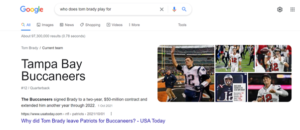A clear content marketing strategy is a must for any business trying to engage and expand its audience. But a survey by the Content Marketing Institute revealed that only 40% of B2B marketers have a clear strategy. Meanwhile, 33% had an undocumented one, 20% planned to set one up in the next year, and 7% had no such plans.
So, do you have a strategy for your content marketing?
If not, or if you’re looking to develop a fresh one, our Orange County SEO agency has a few helpful tips.
What is a Content Marketing Strategy?
A content marketing strategy covers the planning, creation, and distribution of your content. It encompasses everything relevant to how your business uses content to reach customers, grow your audience, and achieve your objectives.
Building a detailed strategy will clarify how you can help readers, viewers, or listeners better than anyone else.
Creating Your Content Marketing Strategy
Confirm Your Content Marketing Goals
What do you want to achieve with your content?
Identifying your goals can be a time-consuming process, but when you know what they are, rank them in order of priority. That will make it easier to create the right content for your business (and ideally your audience) in the short and long term.
Research Your Audience
To create the most valuable content for your audience, you need to know who they are. What types of content do they enjoy? How long do they prefer blog posts, videos, podcasts, and other content to be? And what content do they want but struggle to find?
Answering questions like these will equip you with the information you need to craft high-value content. You can use the following methods to research your audience :
- Surveys
- Social listening tools
- User behavior analysis
- Focus groups
Developing a content marketing strategy without research may be a little faster, but you’re more likely to miss the mark.
Brainstorm Concepts, Topics, and Exciting Ideas
Use your marketing goals and data gathered through your research to brainstorm content ideas. You can try various techniques, such as a mind map: write a topic in the middle of a whiteboard and surround it with anything that comes to mind.
Create Personas
Personas can help you create targeted content that’s more relevant and engaging to specific audience segments. They include concise information on a fictional reader representing a group, such as 30 – 40 year-old professionals with lots of disposable income and no kids. In-depth audience research is essential for building accurate personas.
Build your Content Calendar
Setting up a content calendar will enable you to stay consistent, organized, and aware of upcoming topics. That’s ideal if you need to research a subject or book a space for filming a video. It’s also helpful for promoting content via social media and email before it’s published.
Good content is fundamental for any digital marketing strategy. And if you need help with your digital marketing, including SEP and retargeting, leave it to our Orange County SEO agency.
How can we boost your online visibility? Get in touch to find out!










